By Alex Trukan
Doubling up is a defending strategy based on applying pressure on the ball by two defenders at the same time. It is a very common component of high and counter pressing game but it can be also used effectively in the middle or defending thirds. The rationale behind using it is to further restrict opponent’s options in possession as well as to increase the chance of winning the ball in particular area of the pitch. It is very demanding part of defending, both from the tactical as well as psychological and physical points of view. They key to applying it effectively is the decision making when to do it as well as the determination and confidence to get the ball back once applied. High levels of speed endurance as well as power are needed to be effective from the conditioning perspective.
When opponents are in possession, it is important to recognise the situation characteristics in order to make a decision whether to double up or not. Important aspects to consider are: organisation of the opposition (are they organised or still in transition?), players around the ball (can support be applied if needed?), distance of the nearest player to the ball (can the pressure be applied immediately?), space and control of the player on the ball (is he in difficult situation and does he has support?). As it can be seen on the picture below, it is not the right moment to press or double up.
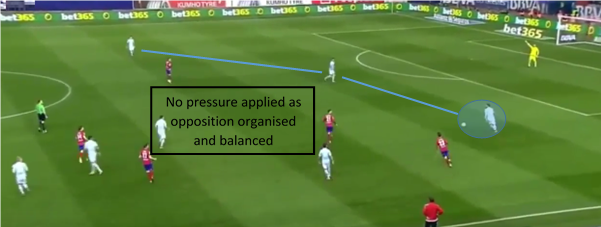
Instead of waiting for the opportunity to double up and win the ball back, the defending team should be proactive and try to force the opposition into a pressing trap in which a doubling up can be applied effectively. One of the ways of doing it is to force the opposition into wide area by cooperation of strikers and midfielders. As the options in the wide area are restricted to one side, it is easier to isolate the opponent and win the ball back.
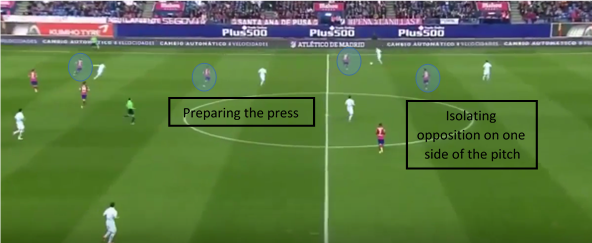
As soon as the ball is played into wide area (this might be a trigger alone) and/or the opponent faces his own goal, pressure can be applied. The first step is to apply pressure on the player with the ball forcing him to take extra time on the ball and put his head down. At the same time, players around the ball should get on the passing line between the ball and nearest opposition players. From that position, remaining on the passing line, an additional pressure can be applied. That will make sure no options are available and the player is doubled up.
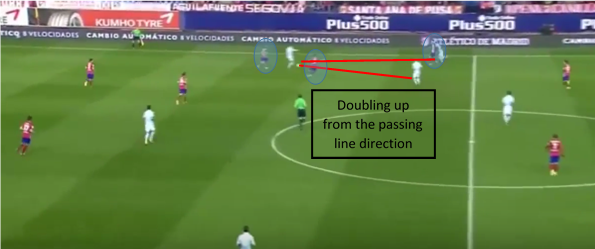
Players that do not pressurise, should stay between the ball and nearest opponents, still restricting the passing options. The role of players further away from the ball is to get compact, stay together and deny spaces being at the same time ready for the counter-attack.
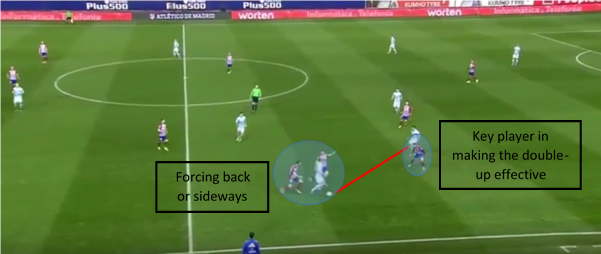
Big part of applying pressure on the ball and doubling up is reading the opponents body language and anticipating the next move. Even before the next pass is played, the defending players should try to adjust their positions and get closer to the receiver to make it easier to apply pressure and double up if needed. That is especially the case in the centre of the pitch due to more options available for the opposition.
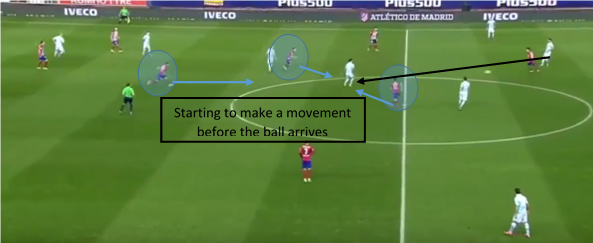
The direction from which the pressure is applied is also crucial. First pressurising player as well as supporting player who doubles up should try to force the opponent into certain areas of the pitch (which depending on tactics) as a second priority after trying to win it. That will make sure that if regaining possession is not possible, the opposition will find it difficult to exploit the weaknesses caused by doubling up.
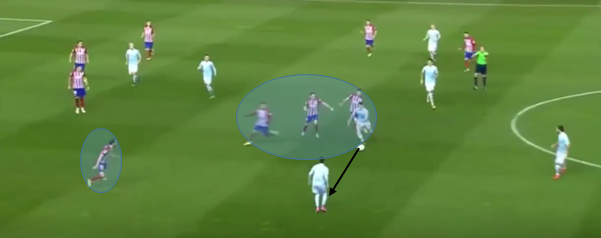
As much as doubling is a tactical element, massive part in it plays the psychological attitude as well as physicality. Players should be determined to win the ball back and should apply the pressure with full confidence of success. Any doubt or slowing down will make it easier for the opposition to play away from pressure. From the physical point of view, players should be ready to double up with full power and pace as well as recover after this highly energy demanding action. That can be improved by training power as well as speed endurance.
By Alex Trukan, Development Coach, Nottingham Forest
@AlexTrukan


